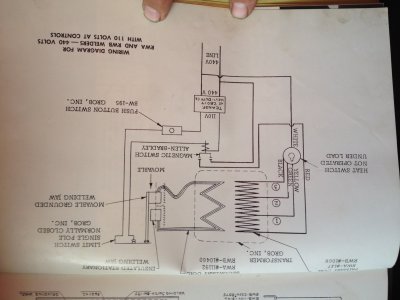- Joined
- May 7, 2014
- Messages
- 776
Hi gang, The Grob 4v-18 is home. The unit was 440Vac with the motor now setup for 220 3 phase. This leaves the bandsaw blade (butt) welder to solve. I have no blades, a bunch of blade stock. And no way to make a blade just yet.
The butt welder pulls L2 and L3 from the main power source to run the large butt welder Xformer.
If I elect to try it w/ my 220 L1 and L2 then I get a a muh lower current draw but would it work?
If I halve the voltage I will halve the current flow and it would mean that the heat up time would need to run longer? I popped in a note to Grob to see if they have a config for the 1983 welder transformer version and any setup connection 220. The print from 2008 does reflect a single Xformer w/ both hookup options.

The butt welder pulls L2 and L3 from the main power source to run the large butt welder Xformer.
If I elect to try it w/ my 220 L1 and L2 then I get a a muh lower current draw but would it work?
If I halve the voltage I will halve the current flow and it would mean that the heat up time would need to run longer? I popped in a note to Grob to see if they have a config for the 1983 welder transformer version and any setup connection 220. The print from 2008 does reflect a single Xformer w/ both hookup options.


